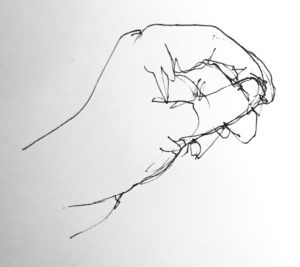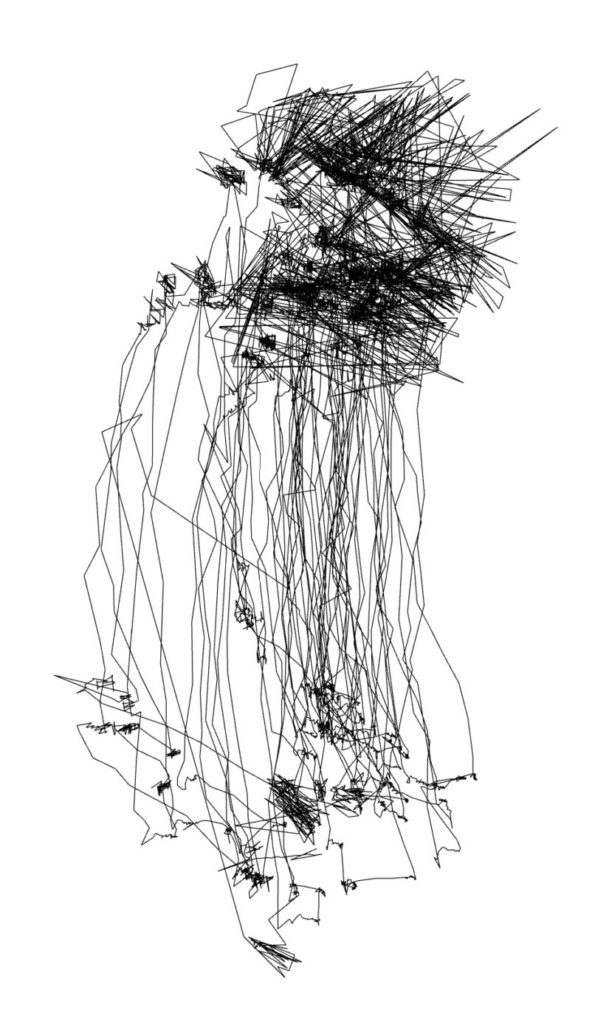This experiment consisted in eye-tracking my eye-movements while drawing my left hand. A monocular Pupil Labs Core eye-tracker was used, tracking the gaze of my left eye. Figure 1 shows my hand-drawing of my left hand and Figure 2 shows my eye scanpath while drawing it. The drawing took 50 seconds to complete (and consequentially Figure 2 is the result of 50 seconds of data).
My practice-based research question consists in the attempt to explore ways of drawing with my eyes, but this exercise visualises my eye movements during my usual hand-drawing practice (which would be useful for future comparisons).
I feel that wearing the eye-tracker does not influence me much due to its unobtrusive nature, and even though at first I am aware and cautious about the fact that I am recording my acts, this immediately wears away as I concentrate on the practice of drawing. My main questions when drawing from life concern the what and where to look at. Many definitions of drawing have been attempted, and the ones I acknowledge most are those which seem to allude to the inconclusive and deliberately attempt a ‘non-definition’ of drawing — perhaps due to the ‘ghostly’ and ‘unfinished’ nature of drawing (and the practice) itself. It is worth noting that I am looking at drawing with my eyes for the sake of the act of drawing per se, and not to regard it as a sketch, as a way to problem-solve or any other possible drawing adaptation.
Figure 2 reminds me of several important points. There is more gazing activity happening around the hand area, which intensifies along its ‘contours’. This evidences the looking and seeing quest of identifying an outline/contour while drawing. Perhaps it is also evident of the induced/habitual ‘rule’ when drawing from life; to draw what you see and not what you know. Drawing from life is both a hesitant and yet, precise activity.

Figure 1: Hand-drawing of my left hand

Figure 2: Eye-tracking result while drawing Figure 1